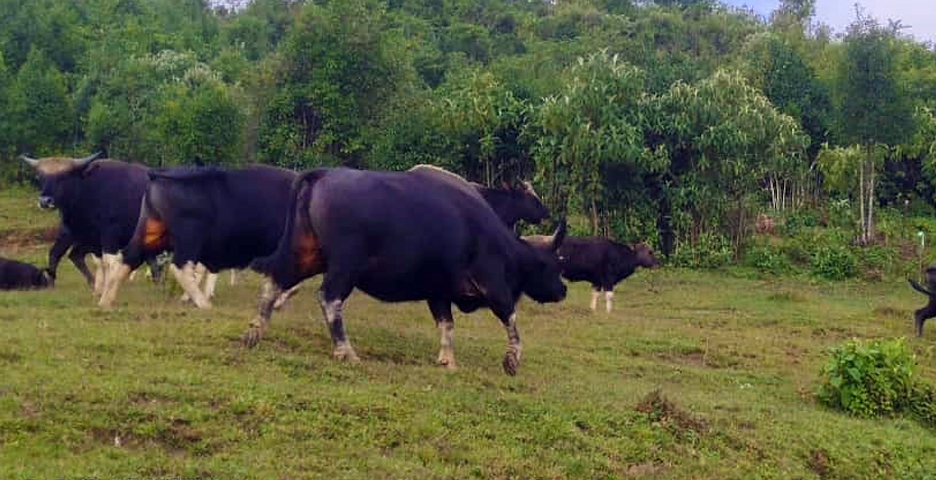Seyochung Village in Kiphire District, Nagaland holds a rich tradition of mithun rearing, a practice deeply ingrained in the cultural fabric of the community. In Seyochung Village, according to Longtili C Sangtam, proprietor of Discover Seyochung, owning mithun is synonymous with prosperity and prestige.

Mithun is also the state animal of Nagaland, also known as gayal. It is revered as a symbol of wealth, symbolizes the economic status and social standing of individuals within the community.
“Historically, the possession of mithun signified affluence and was considered a valuable asset in the traditional society of Nagaland,” said Sangtam.
Seyochung Village also has a Mithun Committee, comprising of a Chairman and Secretary, who plays a pivotal role in overseeing mithun rearing activities in Seyochung Village. The membership in this committee is open to all individuals who own mithuns. The committee serves as a platform for decision-making, resource allocation, and the implementation of communal practices related to mithun rearing.

One of the distinctive customs observed in Seyochung Village is the annual construction of fences for mithun enclosures. This task is a collaborative effort, with each household contributing one day of labor per year. “This communal aspect of fence making brings about a sense of unity and shared responsibility among villagers,” Sangtam added.
Additionally, the Mithun Committee ensures that logistical arrangements, such as providing meals, are made to facilitate the smooth execution of this task.
According to Sangtam, the resources are utilized from both individual fields and reserved forests for fence construction while the villagers have the liberty to selectively harvest trees for fence materials which reflects a harmonious relationship between human activities and the environment.
Sangtam also said Mithun in Seyochung Village enjoys unrestricted movement within the community lands and reserved forests.
“This freedom reflects the close connection between mithun and the cultures in the village and also the traditional ethos of communal land use and shared resources,” said Sangtam.
